|
|
|

|
|
2018 (vol. 18)
|
|
The ammonoid fauna of the Prionocyclus germari Zone (upper Turonian, upper Cretaceous) from Rochefort-en-Valdaine (Drôme, France)
Cyril BAUDOUIN, Gérard DELANOY, Christina IFRIM & Josep A. MORENO-BEDMAR
| HTML  | PDF
| PDF  [8,174 KB]
| DOI: 10.4267/2042/69401 [8,174 KB]
| DOI: 10.4267/2042/69401
|
|
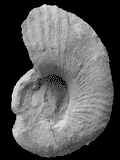 Abstract: The late Turonian ammonoid fauna of Rochefort-en-Valdaine (Drôme, France) is herein described in detail and the intraspecific variability of Vocontiiceras vocontiense Diebold et al., 2018, is studied. The ammonoid assemblage (9 taxa identified) was deposited within the Prionocyclus germari Zone, which
was defined in Germany, and is now also documented in southeastern France. Moreover, the
co-occurrence of the heteromorph ammonoids Hyphantoceras (Hyphantoceras) flexuosum (Schlüter) and Hyphantoceras (Hyphantoceras) ernsti Wiese indicates the lower part of the Prionocyclus germari Zone. Abstract: The late Turonian ammonoid fauna of Rochefort-en-Valdaine (Drôme, France) is herein described in detail and the intraspecific variability of Vocontiiceras vocontiense Diebold et al., 2018, is studied. The ammonoid assemblage (9 taxa identified) was deposited within the Prionocyclus germari Zone, which
was defined in Germany, and is now also documented in southeastern France. Moreover, the
co-occurrence of the heteromorph ammonoids Hyphantoceras (Hyphantoceras) flexuosum (Schlüter) and Hyphantoceras (Hyphantoceras) ernsti Wiese indicates the lower part of the Prionocyclus germari Zone.
|
|
Carnets Geol., vol. 18, no. 14, p. 313-351
Online since December 31, 2018
|
|
First description of rare Teichichnus burrows from carbonate rocks of the Lower Paleozoic of Estonia
Olev VINN & Ursula TOOM
| HTML  | PDF
| PDF  [3,048 KB]
| DOI: 10.4267/2042/68550 [3,048 KB]
| DOI: 10.4267/2042/68550
|
|
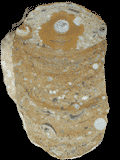 Abstract: Teichichnus
burrows occur in the Sandbian, Katian and Telychian of Estonia associated with
carbonate rocks. It is possible that Teichichnus
is more common in the Sandbian than in the Lower to Middle Ordovician and in the
Silurian. Two ichnospecies, T. rectus
and T. patens, have been identified from the Lower Paleozoic of Estonia. This is the first record of T.
patens in the Ordovician of Baltica. Teichichnus
in the Sandbian, Katian and Telychian of Estonia is restricted to the shallowest
tier levels. The rarity of Teichichnus
in the carbonate sequences of the Ordovician and Silurian of Estonia reflects
little bathymetric variability and an extremely low sedimentation rate in the
shallow epicontinental basin. Abstract: Teichichnus
burrows occur in the Sandbian, Katian and Telychian of Estonia associated with
carbonate rocks. It is possible that Teichichnus
is more common in the Sandbian than in the Lower to Middle Ordovician and in the
Silurian. Two ichnospecies, T. rectus
and T. patens, have been identified from the Lower Paleozoic of Estonia. This is the first record of T.
patens in the Ordovician of Baltica. Teichichnus
in the Sandbian, Katian and Telychian of Estonia is restricted to the shallowest
tier levels. The rarity of Teichichnus
in the carbonate sequences of the Ordovician and Silurian of Estonia reflects
little bathymetric variability and an extremely low sedimentation rate in the
shallow epicontinental basin.
|
|
Carnets Geol., vol. 18, no. 13, p. 305-312
Online since September 21, 2018
|
|
The Oligocene mollusc types of Gaetano Rovereto from Santa Giustina and Sassello (NW Italy)
Maria Cristina BONCI, Gian Mario DABOVE & Michele PIAZZA
| HTML  | PDF
| PDF  [2,074 KB]
| DOI: 10.4267/2042/68549 [2,074 KB]
| DOI: 10.4267/2042/68549
|
|
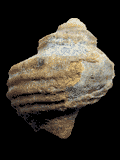 Abstract: The present paper examines the type specimens of the bivalve
and gastropod taxa described by Gaetano Rovereto in the years 1897-1914
coming from the Oligocene rocks of Santa Giustina and Sassello areas (Molare
Formation, Tertiary Piedmont Basin, Central Liguria, NW Italy). These taxa are
part of the "Collezione BTP" (BTP Collection) housed at the Dipartimento di
Scienze della Terra, dell'Ambiente e della Vita - DISTAV - of the Università
di Genova. The collecting sites reported in the Rovereto's papers and
indicated on labels have been reinvestigated in the field. 22 taxa (6 gastropods
and 16 bivalves) are revised and re-documented; 6 have been recognized as younger synonyms of other species, the others
are valid taxa. The majority of this fauna is restricted to the Oligocene time
and to the Tertiary Piedmont Basin. Abstract: The present paper examines the type specimens of the bivalve
and gastropod taxa described by Gaetano Rovereto in the years 1897-1914
coming from the Oligocene rocks of Santa Giustina and Sassello areas (Molare
Formation, Tertiary Piedmont Basin, Central Liguria, NW Italy). These taxa are
part of the "Collezione BTP" (BTP Collection) housed at the Dipartimento di
Scienze della Terra, dell'Ambiente e della Vita - DISTAV - of the Università
di Genova. The collecting sites reported in the Rovereto's papers and
indicated on labels have been reinvestigated in the field. 22 taxa (6 gastropods
and 16 bivalves) are revised and re-documented; 6 have been recognized as younger synonyms of other species, the others
are valid taxa. The majority of this fauna is restricted to the Oligocene time
and to the Tertiary Piedmont Basin.
|
|
Carnets Geol., vol. 18, no. 12, p. 281-303
Online since September 21, 2018
|
|
Campanian-Maastrichtian Rhapydioninidae in the Mediterranean area: Genera Murciella, Sigalveolina n. gen., and Cyclopseudedomia
Jean-Jacques FLEURY
| HTML  | PDF
| PDF  [9,301 KB]
| DOI: 10.4267/2042/68382 [9,301 KB]
| DOI: 10.4267/2042/68382
|
|
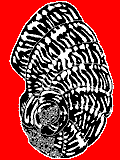 Extended
abstract: This
is the third and last part of a review of the Rhapydioninidae, benthic
foraminifera that inhabited almost alone the most central areas of carbonate
platforms of the Mediterranean realm. A global schematic table (Fig. 18 , in addition to Figs.
15-17)
shows their regional development. The stratigraphic succession of this family
seems to have been dominated by three periods of emersion (one being documented,
the others only inferred) that limit the time distribution of most of these
taxa. Thus it is doubtful that this distribution can be used with certainty in
other areas; for example the mention of "Cuvillierinella? sp."
(possibly a Metacuvillierinella?) in the Upper Maastrichtian of Iran is a
hint of such a discrepancy (Schlagintweit & Rashidi,
2016). Extended
abstract: This
is the third and last part of a review of the Rhapydioninidae, benthic
foraminifera that inhabited almost alone the most central areas of carbonate
platforms of the Mediterranean realm. A global schematic table (Fig. 18 , in addition to Figs.
15-17)
shows their regional development. The stratigraphic succession of this family
seems to have been dominated by three periods of emersion (one being documented,
the others only inferred) that limit the time distribution of most of these
taxa. Thus it is doubtful that this distribution can be used with certainty in
other areas; for example the mention of "Cuvillierinella? sp."
(possibly a Metacuvillierinella?) in the Upper Maastrichtian of Iran is a
hint of such a discrepancy (Schlagintweit & Rashidi,
2016).
Rhapydionininae and Pseudedomiinae subfamilies are summarily
considered here, either because the facts have been established previously, or
because the knowledge of them is still fragmentary. The Rhapydionininae
subfamily, summarily depicted in Figure 18,
is characterized mainly by its endoskeleton, lacking the confluent structure,
with a wide peripheral zone and a very early unrolling trend (either
cylindrical: Rhapydionina, with small proloculus, or flabelliform: Fanrhapydionina,
with large proloculus). The milioline origin of this subfamily is indicated by
species of the R. dercourti group, which are faintly streptospiral in the
initial stages of both generations (Fleury, 2014).
The Pseudedomiinae subfamily is not the subject of these studies, being
essentially represented by taxa in more Eastern regions. Besides, nothing
definite can be deduced from the minimal knowledge of the group (see review in Mavrikas
et al., 1994),
until the type of the type species is still poorly known.
Cuvillierinellinae subfamily (Fleury, 2016)
is made up of six genera, including Cuvillierinella from which the others
are clearly derived. But the origin of this genus remains uncertain. However,
the presence of Pseudonummoloculina aff. kalantarii in our samples
enables the consideration of what would be such an ancestor and how it could be
named. We can try to imagine it from a simple principle and a few observations.
The principle is the independence of evolutionary characters, commonly observed
elsewhere in the family but quite obvious in the type population of Cuvillierinella
salentina (see De Castro, 1988;
Fleury, 2016),
in which coexist the well-known type and specimens of overall same appearance,
either streptospiral and devoid of partitions, or planispiral with a highly
specialized endoskeleton. The observations are those that can be performed on
species described by various authors under the name of Pseudonummoloculina.
These organisms change from streptospiral to planispiral stage during their
development. Some have a unique "notched" opening, others a double row
of openings (and complex combinations of these two rather indistinct types) and
some have no endoskeleton while others display rudimentary partitions. Varying
combinations of these characters defy the conventional criteria of
classification, each combination (changing during the ontogenetic development)
being likely to justify a generic or specific status according to the arbitrary
ordinary standards. These organisms are however in all cases isolated in time
and most often deprived of clearly identifiable descendants (with the exception
of P. pecheuxi Fourcade & Fleury,
2001,
which is the origin of the species of Praechubbina genus). They probably
do not constitute a unique group, but represent a step in an iterative
evolution, leading members of a group of Miliolacea to the Alveolinacea, as Reichel
(1936, 1937)
and Pêcheux (2002)
conceived it and as Fleury and Fourcade
(1990)
illustrated. We are thus led to apply the generic term Pseudonummoloculina
to indicate a transitional state, that is to say an evolving stage. We are here
confronted with the fundamental difficulty of adapting a nomenclature of
creationistic essence to the perpetual reorganization of living organisms. It is
therefore futile to characterize by terminology the temporary results; the term Pseudonummoloculina
seems better to express a vague and essentially unstable notion related to the
realities of evolution, ... at least as long as evolving networks of various
known stages are not identified.
The five genera derived from Cuvillierinella have a wide range of
morphology (Fleury, 2016,
Fig. 13). Each genus is characterized by a dominant evolutionary trend,
variously associated with secondary independent features.
Metacuvillierinella and Pseudochubbina genera are
treated superficially in this text and are probably derived from Cuvillierinella
or its supposed close ancestor. Metacuvillierinella is the closest,
comparable in its young stage to typical streptospiral tests of C. salentina,
comprising an early well developed wide meshed endoskeleton. It is distinguished
by its adult advolute coiling without final uncoiling and its very low
dimorphism of generations, restricted to the initial coiling. Pseudochubbina
is linked to Cuvillierinella perisalentina, also hesitating on its
coiling mode ("Slow Axial Rotation" in Fleury,
2016),
and sharing the "Scattered Secondary Chamberlets" (Fleury,
2016),
which are the only likely criteria for the origin of this genus.
Murciella, Sigalveolina n. gen. and Cyclopseudedomia, are
reviewed here from the types and various new populations, which allows deepening
and renewing of the knowledge of them. They are all fully planispirally coiled
in the A generation and to varying degrees display an endoskeleton that
previously was called "helicoidal structure", here renamed 'confluent
structure'.
Murciella is very close to Cuvillierinella as evidenced by
the coexistence of specimens having characteristics of both types in the
population of the Cuvillierinella type species. The existence of
populations including both Cuvillierinella and Murciella, without
morphological intermediaries, as well as the existence of populations containing
only one or the other of these taxa emphasizes their independence. The six
various populations assigned to M. cuvillieri, known from Spain to the
Eastern Mediterranean sea, are likely to belong to the same zone (CsB6a) and
were never associated with species of the overlying zone. These populations
constitute a homogeneous set close to that of C. salentina appearance,
with a little wider range of the A proloculus and a finer endoskeletal mesh.
Tests of the B generation in several populations suggest that the holotype of
the type species represents this generation, which appears to be less influenced
by uncoiling than C. salentina.
Sigalveolina n. gen. has been long confused with Murciella,
too incompletely known to be distinguished before now. This new genus
characterizes younger levels (zone CsB6b). This study shows that the high degree
of confluent structure that gives its individuality coincides with a
morphological diversity illustrated by four distinct species, including a new
one, Sigalveolina reicheli. This new species probably corresponds to the
mythical material, known as "Cosinella", formerly discovered by
Schlumberger from the Italo-Slovenian border. A tests
of the four species are larger in size than those of Murciella, at
diameters of proloculus of the same order of magnitude; they are only rarely
uncoiled, with the apparent exception of Sigalveolina reicheli n. sp.,
which adopts this trend only at a very late development stage. B tests also tend
to be involute at a later stage, in contrast to the early uncoiling of previous
and next genera.
Cyclopseudedomia is characterized by a very large A proloculus and
an extremely reduced involute stage resulting in a longer uncoiled uniserial
stage. This outstanding evolutionary trend is modulated in four species,
including three already described and a new one, C. mavrikasi from the
Italo-Slovenian border and Southern Italy. This trend is well marked in tests of
both generations. In A tests, the involute part never exceeds 1.5 whorls around
a large proloculus, and the uncoiled part is either cylindrical or flabelliform.
B tests are mainly made of large evolute flabelliform flange, reaching a
discoidal stage in the type species only; these flanges are always flat and
increase in thickness very slightly towards the periphery.
Finally, it must be noted that data in Figure 18,
reduced to the A tests, are imprecise inasmuch as the genera generally include
the features of several species, which are distinguished by nuances affecting
their characters, but also because the time span of the genera and the included
species likely does not correspond to the entire period of time covered by the
zone in which they are recognized. This means that Figure 18 represents a state of schematic knowledge that can be improved only by specific
careful field studies.
|
|
Carnets Geol., vol. 18, no. 11, p. 233-280
Online since September 4, 2018
|
|
Variations in fluvial reworking of Polish moldavites induced by hydrogeological change
Tomasz BRACHANIEC
| HTML  | PDF
| PDF  [1,056 KB]
| DOI: 10.4267/2042/68186 [1,056 KB]
| DOI: 10.4267/2042/68186
|
|
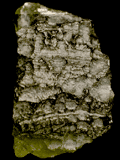 Abstract: Moldavites
as ejecta glasses are fragile and transient: they are quickly abraded in fluvial
conditions, this was confirmed by tumbling experiments. In the present study,
multiple tumbling experiments were conducted to simulate the hydrogeological
conditions of deposition of moldavites found in several different gravel pits.
These experiments threw new light on the evolution of tektites during reworking.
It appears that the original glass shape and mass as well as environmental
conditions such as river velocity and the type of sediment with which they are
associated are all important variables. However, the experiment did not simulate
other significant variables, such as the variability of environmental energy.
With given advantageous conditions, moldavite glasses could probably have
withstood dozen kilometers of reworking, but this assertion is not sufficient to
constrain the distance to their supply areas. Abstract: Moldavites
as ejecta glasses are fragile and transient: they are quickly abraded in fluvial
conditions, this was confirmed by tumbling experiments. In the present study,
multiple tumbling experiments were conducted to simulate the hydrogeological
conditions of deposition of moldavites found in several different gravel pits.
These experiments threw new light on the evolution of tektites during reworking.
It appears that the original glass shape and mass as well as environmental
conditions such as river velocity and the type of sediment with which they are
associated are all important variables. However, the experiment did not simulate
other significant variables, such as the variability of environmental energy.
With given advantageous conditions, moldavite glasses could probably have
withstood dozen kilometers of reworking, but this assertion is not sufficient to
constrain the distance to their supply areas.
|
|
Carnets Geol., vol. 18, no. 10, p. 225-232
Online since July 27, 2018
|
|
Inventory of Georges Pissarro's fossil collection from the Lutetian (middle Eocene) of Cotentin (France) kept in the Science Museum of Laval (France)
Jérôme TRÉGUIER & Jean-Michel PACAUD
| HTML  | PDF
| PDF  [669 KB]
| DOI: 10.4267/2042/68184 [669 KB]
| DOI: 10.4267/2042/68184
|
|
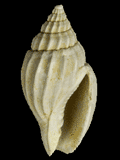 Abstract: One-hundred and fourteen samples from the Georges Pissarro's collection are kept in the
Sciences Museum of Laval. Most of these represent the molluscan fauna from
the Eocene of Cotentin (Hautteville-Bocage, Fresville and Gourbesville;
France), Loire-Atlantique (Saffré, France) and Alabama (Monroe, U.S.). They
were part of a bigger collection gathered by Maurice Cossmann and
Georges Pissarro at the end of the XIXth and the
beginning of the XXth centuries, then subsequently split in two parts. The
first one, Cossmann's, was sent to the National Museum of Natural
History in Paris. Like the Marin Defrance's collection from the Museum
of Caen, the second part, Pissarro's, was considered
lost, and then partially discovered in the Sciences Museum of Laval, giving it some
scientific significance. These samples from Cotentin have been curated and the
types and figured specimens found are illustrated herein. Abstract: One-hundred and fourteen samples from the Georges Pissarro's collection are kept in the
Sciences Museum of Laval. Most of these represent the molluscan fauna from
the Eocene of Cotentin (Hautteville-Bocage, Fresville and Gourbesville;
France), Loire-Atlantique (Saffré, France) and Alabama (Monroe, U.S.). They
were part of a bigger collection gathered by Maurice Cossmann and
Georges Pissarro at the end of the XIXth and the
beginning of the XXth centuries, then subsequently split in two parts. The
first one, Cossmann's, was sent to the National Museum of Natural
History in Paris. Like the Marin Defrance's collection from the Museum
of Caen, the second part, Pissarro's, was considered
lost, and then partially discovered in the Sciences Museum of Laval, giving it some
scientific significance. These samples from Cotentin have been curated and the
types and figured specimens found are illustrated herein.
|
|
Carnets Geol., vol. 18, no. 9, p. 205-223
Online since July 27, 2018
|
|
A palaeobiological window into the Lower Cretaceous Cupido Formation: Puerto México section, Nuevo Leon, Mexico
Felipe TORRES DE LA CRUZ, Elizabeth CHACÓN-BACA, Yesica Edith GÓMEZ-MANCHA & Tomás COSSÍO-TORRES
| HTML  | PDF
| PDF  [1,860 KB]
| DOI: 10.4267/2042/68182 [1,860 KB]
| DOI: 10.4267/2042/68182
|
|
 Abstract: A rich
geobiological record of Cretaceous biotic and abiotic interactions around the
proto-Gulf of Mexico has been preserved in the massive Cupido carbonate
platform, i.e., in a sedimentary sequence that represents a depositional period of
approximately 15 Myr. This work documents lateral facies variation on a dip slope
reef from a new outcrop in the upper part of the Cupido Formation in the state
of Nuevo Leon, Mexico. The measured transect is correlated with a stratigraphic
column logged in a nearby section. The preserved fossil biota represents
marginal reef facies dominated by abundant rudist shells such as Douvillelia
skeltoni, Toucasia sp., Offneria
sp., and Amphitrocoelus sp. associated with relatively large colonial corals
(with diameters up to 25 cm) like Stelidioseris
sp. and to a lesser extent, with stromatoporoids. Benthic foraminifers (miliolids and textularids) with associated dasycladalean algae such as Salpingorella
sp. and Terquemella spp.
dominate the microfossiliferous content in wackestones to packstones. This facies is overlain by a thin
(15-30 cm) stromatolite horizon at the upper end of the measured section. This
locality represents a new paleobiological and taphonomic window into one of the
most extensive carbonate platform system developed along the margin of the Gulf
of Mexico during the Cretaceous. Abstract: A rich
geobiological record of Cretaceous biotic and abiotic interactions around the
proto-Gulf of Mexico has been preserved in the massive Cupido carbonate
platform, i.e., in a sedimentary sequence that represents a depositional period of
approximately 15 Myr. This work documents lateral facies variation on a dip slope
reef from a new outcrop in the upper part of the Cupido Formation in the state
of Nuevo Leon, Mexico. The measured transect is correlated with a stratigraphic
column logged in a nearby section. The preserved fossil biota represents
marginal reef facies dominated by abundant rudist shells such as Douvillelia
skeltoni, Toucasia sp., Offneria
sp., and Amphitrocoelus sp. associated with relatively large colonial corals
(with diameters up to 25 cm) like Stelidioseris
sp. and to a lesser extent, with stromatoporoids. Benthic foraminifers (miliolids and textularids) with associated dasycladalean algae such as Salpingorella
sp. and Terquemella spp.
dominate the microfossiliferous content in wackestones to packstones. This facies is overlain by a thin
(15-30 cm) stromatolite horizon at the upper end of the measured section. This
locality represents a new paleobiological and taphonomic window into one of the
most extensive carbonate platform system developed along the margin of the Gulf
of Mexico during the Cretaceous.
|
|
Carnets Geol., vol. 18, no. 8, p. 187-203
Online since July 21, 2018
|
|
Phanerozoic Brachiopod Genera of China, by Rong Jiayu
(editor-in-chief), Jin Yugan, Shen Shuzhong and Zhan Renbin (eds.), 2017
Fernando ALVAREZ & John TALENT
| HTML  | PDF
| PDF  [273 KB] [273 KB]
|
|
Carnets Geol., vol. 18, Book Review 1, p. 183-186
Online since July 19, 2018
|
|
Valanginian belemnites: New taxonomical and stratigraphical observations
Nico M.M. JANSSEN
| HTML  | PDF
| PDF  [1,029 KB]
| DOI: 10.4267/2042/68153 [1,029 KB]
| DOI: 10.4267/2042/68153
|
|
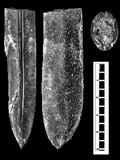 Abstract: Six new Valanginian belemnite species (Duvalia crassa sp. nov., Duvalia
elongata sp. nov., Duvalia kleini
sp. nov., Duvalia superconstricta sp.
nov., Castellanibelus vaubellensis sp.
nov., and "Hibolithes" lebresensis
sp. nov.) are described here and two species (Duvalia aff. elongata
and "Hibolithes" aff. pistilliformis
(Blainville, 1827)) are left in open nomenclature. They come from both the
distal and proximal parts of the Vocontian Basin in south-east France and the
Baetic Cordillera in south-east Spain. In addition lectotypes are selected for Castellanibelus
orbignyanus (Duval-Jouve, 1841), Castellanibelus
picteti (Mayer, 1866), and Duvalia
lata (Blainville, 1827). Abstract: Six new Valanginian belemnite species (Duvalia crassa sp. nov., Duvalia
elongata sp. nov., Duvalia kleini
sp. nov., Duvalia superconstricta sp.
nov., Castellanibelus vaubellensis sp.
nov., and "Hibolithes" lebresensis
sp. nov.) are described here and two species (Duvalia aff. elongata
and "Hibolithes" aff. pistilliformis
(Blainville, 1827)) are left in open nomenclature. They come from both the
distal and proximal parts of the Vocontian Basin in south-east France and the
Baetic Cordillera in south-east Spain. In addition lectotypes are selected for Castellanibelus
orbignyanus (Duval-Jouve, 1841), Castellanibelus
picteti (Mayer, 1866), and Duvalia
lata (Blainville, 1827).
|
|
Carnets Geol., vol. 18, no. 7, p. 167-181
Online since July 7, 2018
|
|
Heteroceras gracile sp. nov., a new species of Heteroceras Orbigny, 1849, from the upper Barremian of
Morteiron (Alpes de Haute-Provence, France)
Cyril BAUDOUIN, Gérard DELANOY, Grégoire BOURNAUD & Roland GONNET
| HTML  | PDF
| PDF  [959 KB]
| DOI: 10.4267/2042/66955 [959 KB]
| DOI: 10.4267/2042/66955
|
|
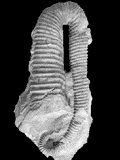 Abstract: The species Heteroceras gracile
sp. nov. is described; it is a small and slender species, with a small helix and
hamuliniform morphology, previously considered as an atypical variant of Heteroceras
baylei (Reynès, 1876). In southeast France, it is mainly known in
the Morteiron section (Alpes de Haute-Provence, France), but the species is also
present in Bulgaria and possibly in Japan. Abstract: The species Heteroceras gracile
sp. nov. is described; it is a small and slender species, with a small helix and
hamuliniform morphology, previously considered as an atypical variant of Heteroceras
baylei (Reynès, 1876). In southeast France, it is mainly known in
the Morteiron section (Alpes de Haute-Provence, France), but the species is also
present in Bulgaria and possibly in Japan.
|
|
Carnets Geol., vol. 18, no. 6, p. 155-165
Online since May 18, 2018
|
|
Is Strontium-isotope stratigraphy a reliable tool for dating shallow-marine platform carbonates at the Barremian-Aptian transition? Review of western Tethyan case studies
Camille FRAU, Jean-Pierre MASSE, Mukerrem FENERCI-MASSE, Anthony J.-B. TENDIL, Antoine PICTET & Cyprien LANTEAUME
| HTML  | PDF
| PDF  [917 KB]
| DOI: 10.4267/2042/66931 [917 KB]
| DOI: 10.4267/2042/66931
|
|
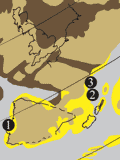 Abstract: Strontium-isotope
measurements on Lower Cretaceous marine rocks derive from belemnite material
sampled in ammonite-constrained basinal successions. A group of values with a
narrow range across the Barremian/Aptian boundary does
not allow the separation of the uppermost Barremian (Martelites sarasini ammonite zone) from the lower Aptian
pro parte (Deshayesites oglanlensis-D.
forbesi ammonite zones). Growing numbers of studies applied Sr-Isotope
Stratigraphy (SIS) on Barremian-Aptian shallow-marine sequences (Urgonian facies)
in
order to solve controversial results obtained by using different shallow-water
biological time markers. Based on re-examination of case studies, we
conclude that Sr-isotope values can neither be used to prove nor to disprove the
location of the putative Barremian/Aptian boundary based on biostratigraphy.
Pending more data available, SIS should be used with caution for dating
ammonite-free carbonate sediments in the corresponding time interval. Abstract: Strontium-isotope
measurements on Lower Cretaceous marine rocks derive from belemnite material
sampled in ammonite-constrained basinal successions. A group of values with a
narrow range across the Barremian/Aptian boundary does
not allow the separation of the uppermost Barremian (Martelites sarasini ammonite zone) from the lower Aptian
pro parte (Deshayesites oglanlensis-D.
forbesi ammonite zones). Growing numbers of studies applied Sr-Isotope
Stratigraphy (SIS) on Barremian-Aptian shallow-marine sequences (Urgonian facies)
in
order to solve controversial results obtained by using different shallow-water
biological time markers. Based on re-examination of case studies, we
conclude that Sr-isotope values can neither be used to prove nor to disprove the
location of the putative Barremian/Aptian boundary based on biostratigraphy.
Pending more data available, SIS should be used with caution for dating
ammonite-free carbonate sediments in the corresponding time interval.
|
|
Carnets Geol., vol. 18, no. 5, p. 139-154
Online since April 21, 2018
|
|
Rediscovery of the type locality of the Udoteacean alga Boueina hochstetteri Toula, 1884, in the Lower Cretaceous of Serbia
Ioan I. BUCUR, Milan N. SUDAR, Emanoil SĂSĂRAN, Divna JOVANOVIĆ, George PLEŞ & Svetlana POLAVDER
| HTML  | PDF
| PDF  [2,652 KB]
| DOI: 10.4267/2042/66509 [2,652 KB]
| DOI: 10.4267/2042/66509
|
|
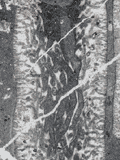 Abstract: Boueina
hochstetteri Toula
(type-species of the genus) was published by Toula (1884) in the 10th
report of his travel through the Balkan region. He considered this species to be
a problematic organism with uncertain systematic affiliation. Later, Steinmann
(1901) assigned this fossil to the calcareous algae. Our own field work
performed in the autumns of 2015 and 2016 in the Pirot area (SE Serbia) led to
re-identification of the rich Boueina
hochstetteri type level, close to the confluence of the Temska and Niava
Rivers, the type locality of Toula. The rich Boueina
level is part of a succession of bioclastic limestones. The fragments of Boueina thalli are occasionally branched, a feature supporting the
interpretation of Boueina as an
inarticulate udoteacean alga with rare branching. Abstract: Boueina
hochstetteri Toula
(type-species of the genus) was published by Toula (1884) in the 10th
report of his travel through the Balkan region. He considered this species to be
a problematic organism with uncertain systematic affiliation. Later, Steinmann
(1901) assigned this fossil to the calcareous algae. Our own field work
performed in the autumns of 2015 and 2016 in the Pirot area (SE Serbia) led to
re-identification of the rich Boueina
hochstetteri type level, close to the confluence of the Temska and Niava
Rivers, the type locality of Toula. The rich Boueina
level is part of a succession of bioclastic limestones. The fragments of Boueina thalli are occasionally branched, a feature supporting the
interpretation of Boueina as an
inarticulate udoteacean alga with rare branching.
|
|
Carnets Geol., vol. 18, no. 4, p. 123-137
Online since April 12, 2018
|
|
Early Cenomanian coral faunas from Nea Nikopoli (Kozani, Greece; Cretaceous)
Hannes LÖSER, Thomas STEUBER & Christian LÖSER
| HTML  | PDF
| PDF  [23,800 KB]
| DOI: 10.4267/2042/66094 [23,800 KB]
| DOI: 10.4267/2042/66094
|
|
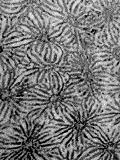 Abstract: A Lower Cenomanian marine succession rich in corals is reported from the western margin of the Pelagonian zone in central Greece. The succession starts with a coarse conglomerate followed by sandstone, nodular limestone and massive limestone. Fifteen levels contain corals with the nodular limestone being the most
species-rich. As a total, 78 species in 46 genera are described. They belong to 15 superfamilies. Three genera and four species are described as new. The new genera belong to the families Heterocoeniidae and Felixaraeidae, and the informal Plesiosmiliids. The record of six genera results in stratigraphical range extensions. The coral associations show more relationships to
Lower than to Upper Cretaceous faunas. Thirty-nine genera already existed before the Cenomanian and 33 genera continued into the Middle Cenomanian, but only 19 genera persisted into the Turonian. The coral fauna has close palaeobiogeographic relationships with mainly Boreal or North Tethyan Cenomanian faunas such as those of the Aquitanian Basin, the
Basque-Cantabrian Basin, or with faunas from the northern margin of the Rhenish Massif, but shares also species with the
Upper Aptian to Lower Albian of the Bisbee Basin in North America and with faunas of the
Lower to Middle Albian of the Northern Pyrenees. Abstract: A Lower Cenomanian marine succession rich in corals is reported from the western margin of the Pelagonian zone in central Greece. The succession starts with a coarse conglomerate followed by sandstone, nodular limestone and massive limestone. Fifteen levels contain corals with the nodular limestone being the most
species-rich. As a total, 78 species in 46 genera are described. They belong to 15 superfamilies. Three genera and four species are described as new. The new genera belong to the families Heterocoeniidae and Felixaraeidae, and the informal Plesiosmiliids. The record of six genera results in stratigraphical range extensions. The coral associations show more relationships to
Lower than to Upper Cretaceous faunas. Thirty-nine genera already existed before the Cenomanian and 33 genera continued into the Middle Cenomanian, but only 19 genera persisted into the Turonian. The coral fauna has close palaeobiogeographic relationships with mainly Boreal or North Tethyan Cenomanian faunas such as those of the Aquitanian Basin, the
Basque-Cantabrian Basin, or with faunas from the northern margin of the Rhenish Massif, but shares also species with the
Upper Aptian to Lower Albian of the Bisbee Basin in North America and with faunas of the
Lower to Middle Albian of the Northern Pyrenees.
|
|
Carnets Geol., vol. 18, no. 3, p. 23-121
Online since April 1, 2018
|
|
Fossil whale barnacles from the lower Pleistocene of Sicily shed light on the coeval Mediterranean cetacean fauna
Alberto COLLARETA, Gianni INSACCO, Agatino REITANO, Rita CATANZARITI, Mark BOSSELAERS, Marco MONTES & Giovanni BIANUCCI
| HTML  | PDF
| PDF  [2,032 KB]
| DOI: 10.4267/2042/65747 [2,032 KB]
| DOI: 10.4267/2042/65747
|
|
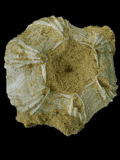 Abstract: We report on three shells
of whale barnacle (Cirripedia: Coronulidae) collected from Pleistocene
shallow-marine deposits exposed at Cinisi (northwestern Sicily, southern Italy).
These specimens are identified as belonging to the extinct species Coronula
bifida Bronn, 1831. Calcareous
nannoplankton analysis of the sediment hosting the coronulid remains places
the time of deposition between 1.93 and 1.71 Ma (i.e.,
at the Gelasian-Calabrian transition), an interval during which
another deposit rich in whale barnacles exposed in southeastern Apulia (southern
Italy) formed. Since Coronula Lamarck, 1802, is
currently found inhabiting the skin of humpback whales [Cetacea:
Balaenopteridae: Megaptera novaeangliae (Borowski, 1781)], and
considering that the detachment of extant coronulids from their hosts' skin has
been mainly observed in occurrence of cetacean breeding/calving areas, the
material here studied supports the existence of a baleen whale migration route between the central Mediterranean Sea (the putative reproductive ground)
and the North Atlantic (the putative feeding ground) around 1.8 Ma, when several
portions of present-day southern Italy were still submerged. The early
Pleistocene utilization of the epeiric seas of southern Italy as
breeding/calving areas by migrating mysticetes appears to be linked to the
severe climatic degradation that has been recognized at the Gelasian-Calabrian
transition and that is marked in the fossil record of the Mediterranean Basin by
the appearance of "northern guests" such as Arctica islandica (Linnaeus,
1767) (Bivalvia: Veneroida). The subsequent abandonment of the Mediterranean Sea by most
species of mysticetes is likely to have resulted from the progressive emergence
of shallow-water coastal environments that occurred in Calabrian and Middle
Pleistocene times. Abstract: We report on three shells
of whale barnacle (Cirripedia: Coronulidae) collected from Pleistocene
shallow-marine deposits exposed at Cinisi (northwestern Sicily, southern Italy).
These specimens are identified as belonging to the extinct species Coronula
bifida Bronn, 1831. Calcareous
nannoplankton analysis of the sediment hosting the coronulid remains places
the time of deposition between 1.93 and 1.71 Ma (i.e.,
at the Gelasian-Calabrian transition), an interval during which
another deposit rich in whale barnacles exposed in southeastern Apulia (southern
Italy) formed. Since Coronula Lamarck, 1802, is
currently found inhabiting the skin of humpback whales [Cetacea:
Balaenopteridae: Megaptera novaeangliae (Borowski, 1781)], and
considering that the detachment of extant coronulids from their hosts' skin has
been mainly observed in occurrence of cetacean breeding/calving areas, the
material here studied supports the existence of a baleen whale migration route between the central Mediterranean Sea (the putative reproductive ground)
and the North Atlantic (the putative feeding ground) around 1.8 Ma, when several
portions of present-day southern Italy were still submerged. The early
Pleistocene utilization of the epeiric seas of southern Italy as
breeding/calving areas by migrating mysticetes appears to be linked to the
severe climatic degradation that has been recognized at the Gelasian-Calabrian
transition and that is marked in the fossil record of the Mediterranean Basin by
the appearance of "northern guests" such as Arctica islandica (Linnaeus,
1767) (Bivalvia: Veneroida). The subsequent abandonment of the Mediterranean Sea by most
species of mysticetes is likely to have resulted from the progressive emergence
of shallow-water coastal environments that occurred in Calabrian and Middle
Pleistocene times.
|
|
Carnets Geol., vol. 18, no. 2, p. 9-22
Online since March 19, 2018
|
|
Hedbergella yezoana is a valid species name: Comments on the case 3620 and decision (opinion 2362) by the International Commission of Zoological Nomenclature
M. Dan GEORGESCU
| HTML  | PDF
| PDF  [623 KB]
| DOI: 10.4267/2042/64918 [623 KB]
| DOI: 10.4267/2042/64918
|
|
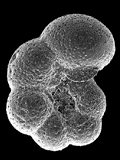 Abstract: International Commission of Zoological Nomenclature decided in September 2015
on case 3620 submitted by A. Ando (United States National Museum, Smithsonian Institution,
Washington, D.C.), which regards the status of the species Ticinella primula Luterbacher in Renz et
al., 1963, and Hedbergella trocoidea yezoana Takayanagi & Iwamoto,
1962. Decision was to place the former on the Official List of Specific Names in
Zoology and the latter on the Official Index of Rejected and Invalid Specific
Names in Zoology (ICZN, 2015, p. 227). The scientific fundamentals in the
presentation of case 3620 are weak and do not support such a decision by the
International Commission. Moreover, they create a significant disturbance of
nomenclatural stability in the Linnaean classification of the Cretaceous planktonic foraminifera. Abstract: International Commission of Zoological Nomenclature decided in September 2015
on case 3620 submitted by A. Ando (United States National Museum, Smithsonian Institution,
Washington, D.C.), which regards the status of the species Ticinella primula Luterbacher in Renz et
al., 1963, and Hedbergella trocoidea yezoana Takayanagi & Iwamoto,
1962. Decision was to place the former on the Official List of Specific Names in
Zoology and the latter on the Official Index of Rejected and Invalid Specific
Names in Zoology (ICZN, 2015, p. 227). The scientific fundamentals in the
presentation of case 3620 are weak and do not support such a decision by the
International Commission. Moreover, they create a significant disturbance of
nomenclatural stability in the Linnaean classification of the Cretaceous planktonic foraminifera.
|
|
Carnets Geol., vol. 18, no. 1, p. 1-7
Online since February 15, 2018
|
|
|
|